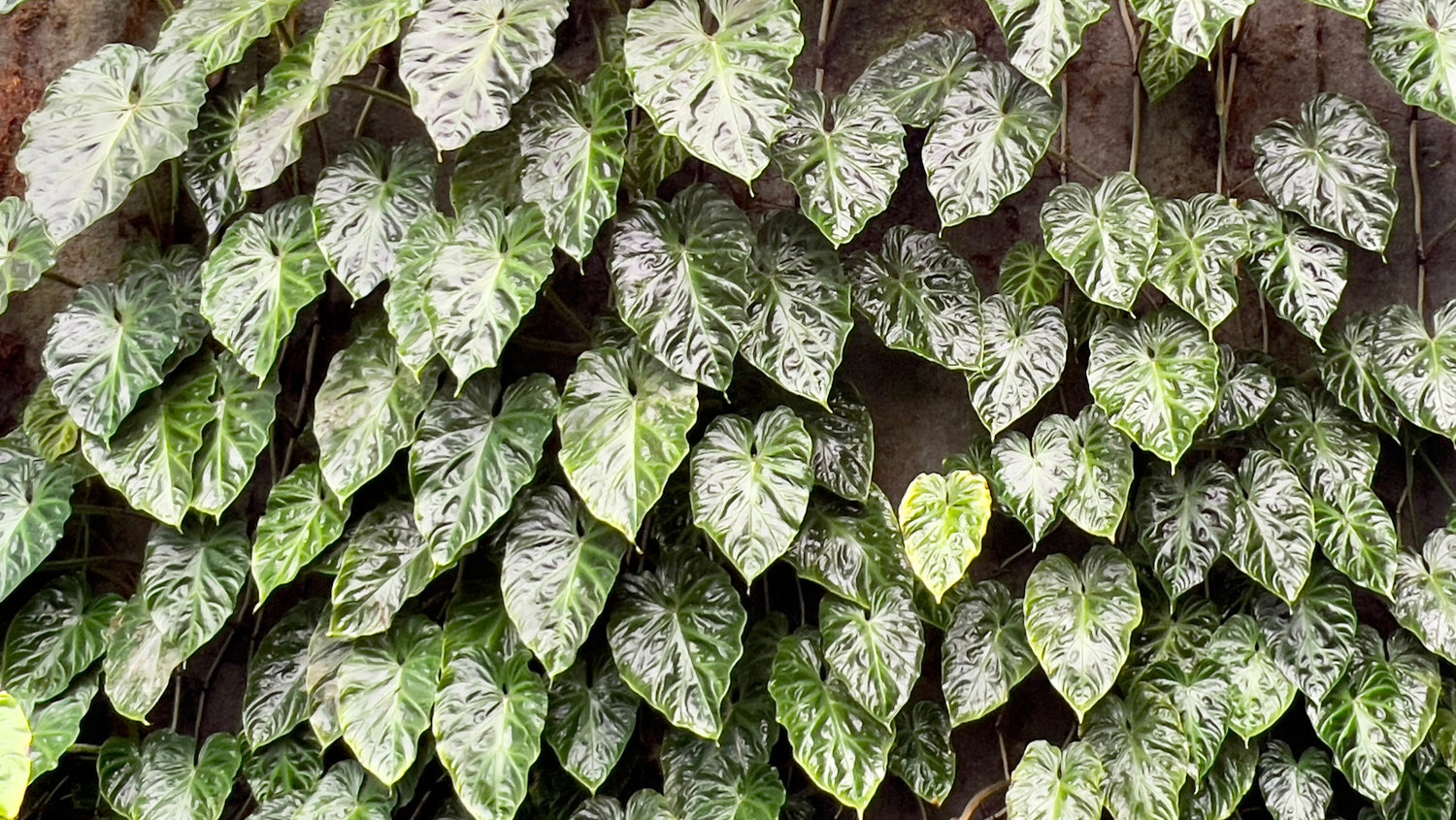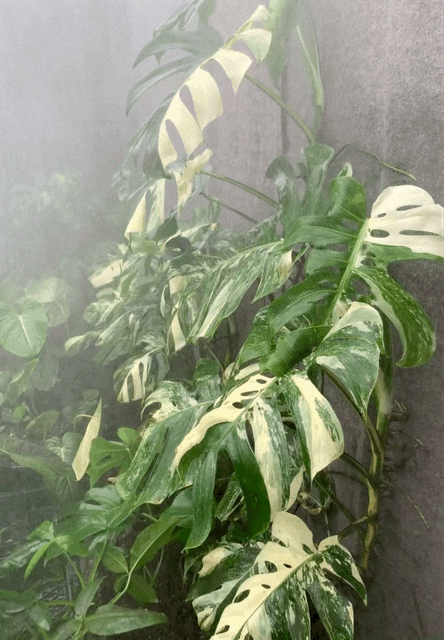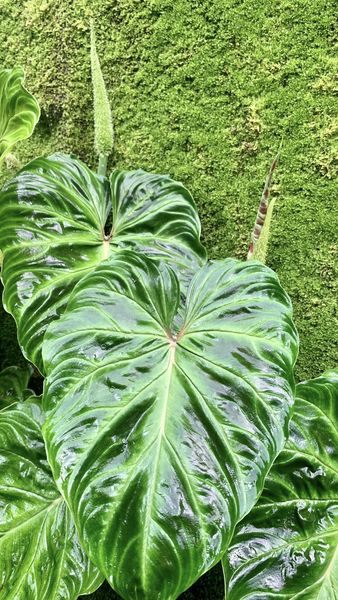
Living Wall of Aroids
Living walls promote the growth of aroids in gardens where space may limit traditional gardening options. They provide a modern approach to vertical gardens, enabling the integration of nature into the garden setting. Additionally, they allow individuals to engage with nature as they construct, plant, and maintain these living systems.

On-Line Workshop
As part of the Araceae continuing education program, we offer online workshops that share our experiences with the Living Wall of Aroids and the Araceae Cloud Forest. Our workshops aim to provide enthusiasts and collectors with a deeper understanding of how to grow and display their aroid collections effectively.

Philodendron verrucosum
Philodendron verrucosum is a stunning tropical plant
known for its vibrant and velvety leaves.
Scientific Classification:
Family: Araceae
Genus: Philodendron
Species: P. verrucosum
Living Wall of Aroids
Subtropical Exotics Living Wall of
Aroids: Description
Structure and Materials
The Living Wall of Aroids at Subtropical Exotics is constructed using 100% recycled rP.E.T. plastic bottles, which form a highly moisture-resistant felt material. This ensures the wall does not rot or lose shape, even when wet.
The design allows for mass planting and vertical growth, maximising limited space and creating a visually striking, natural feature suitable for indoor and
outdoor environments.
Plant Selection and Growth
The wall is dedicated to aroids—plants from the Araceae family—including hemi epiphytic climbers, appressed climbers, and epiphytes.
Notable species featured include:
Philodendron verrucosum: Known
for its vibrant, velvety leaves.
Monstera deliciosa (small
form variegated): Valued for its unique variegation.
Rhaphidophora decursiva: A
tropical climbing aroid with long, glossy leaves
Plants are rooted in a premium coco coir blend at the wall’s base, allowing aerial
roots to attach to the felt as they mature.
Ecological Features
The Living wall is designed to mimic natural rainforest conditions, supporting high humidity and encouraging the growth of mosses alongside the aroids.
Mosses, ancient non-flowering plants, gradually cover the wall and pots, adding texture and ecological value.
Design and Aesthetic Impact
The Living Wall of Aroids is a living art piece, offering a lush, vertical “jungle”
that brings nature into living and entertainment spaces.
Lighting can be integrated to enhance the wall’s appearance and highlight the plants' diverse shapes, colours, and textures.
The Living wall modules can be tailored to specific environments and maintenance needs, making them versatile for various settings.
Innovation and Expertise
Subtropical Exotics has developed expertise in collecting and cultivating aroids, focusing on innovative living wall designs that replicate the natural cloud forest environment for these plants.
The system is part of a broader educational and horticultural initiative, sharing knowledge and experiences with plant enthusiasts and collectors.
Key Features
The Subtropical Exotics Living Wall of
Aroids is a sustainable, visually impactful vertical garden that showcases the diversity and beauty of aroids, while promoting innovative horticultural practices and environmental awareness.

Monstera deliciosa small form varigated
Monstera deliciosa small form varigated is a variety of the popular Monstera borsigiana due to its varigation.
Scientific Classification:
Family: Araceae
Genus: Monstera
Species: M. deliciosa var. borsigiana

Natural Mosses
They're ancient plants
Over time the Living Pots & Totems will be covered with Mosses as shown in the attached image.
Mosses are non-flowering plants which produce spores and have stems and leaves, but don't have true roots.
Mosses, are classified as Bryophyta (bryophytes) in the plant kingdom.
They date back 450 million years, and have survived and thrived through a range of drastic climate changes.
Comprised of 15,000 – 25,000 species, they occur on every continent and in every ecosystem habitable by plants that use sunlight for energy.
Among the world of plants, the bryophytes are the second most diverse group exceeded only by the angiosperms, the flowering plants (350,000 species).

